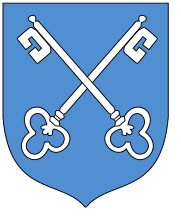
Alternate names: Gowarczów [Pol], Govartchov [Yid], Govarchuv [Rus], Gowarchow, Russian: Говарчув. גובארצ'וב-Hebrew. 51°17' N, 20°26' E, 52 miles SE of Łódź, 25 miles SE of Tomaszów Mazowiecki, 6 miles N of Końskie. 1900 Jewish population: 681. Słownik Geograficzny Królestwa Polskiego (1880-1902), II, p. 756: "Gowarczów". Yizkor: Pinkas ha-kehilot; entsiklopediya shel ha-yishuvim le-min hivasdam ve-ad le-aher shoat milhemet ha-olam ha-sheniya: Poland vol. 1: The communities of Lodz and its region (Jerusalem, 1976). A village in Końskie County, Świętokrzyskie Voivodeship in south-central Poland and seat of the administrative district called Gmina Gowarczów, it is 9 km (6 mi) N of Końskie and 46 km (29 mi) N of the regional capital Kielce. The village has a population of 1,400. Villages and settlements of the gmina: Bębnów, Bernów, Borowiec, Brzeźnica, Giełzów, Gowarczów, Kamienna Wola, Komaszyce, Korytków, Kupimierz, Kurzacze, Miłaków, Morzywół, Rogówek, Ruda Białaczowska and Skrzyszów. [May 2009]
US Commission No. POCE00068
Gowarczow is located in the Radomsuie region, at 51º15 20º29, 121 km from Warszawa. The cemetery is on Aleja Wyzwolenin Street. Present town population is 5,000-25,000 people with no Jews.
- Local: Wojt Gminy, 26-407, Gowarczow, tel. 22.
- Regional: Wojewodzki Konserwator Zabythow, 26-600 Radom, ul Moniaszki 5a, tel. 2-13-16.
- Adam Penkalla, ul. Gagavina 9, ul? 24, 26-600 Radom, tel. 48 - 366 35 34 is interested.
The earliest known Jewish community was in the mid-17th century (possibly 1662). 1927 Jewish population was 508. The unlandmarked Jewish cemetery was established sometime during the 17th century. The last known Conservative burial in the cemetery was in 1942. The isolated suburban flat land has no sign or marker. Reached by turning directly off a public road, access is open to all with no wall or gate. No gravestones, known mass graves, or structures exist. The municipality owns property used for agriculture. Adjacent properties are recreational. Private Jewish visitors visit rarely. The cemetery was vandalized during World War II with no maintenance since the war. Incompatible existing development is a moderate threat, with water erosion as a slight threat.
Adam Penkalla completed survey on August 4, 1991 after a visit on July 16, 1991.
